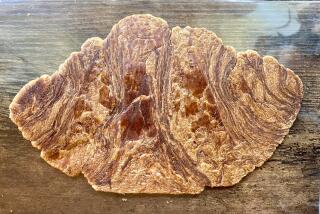Squash is hitting the markets. Here’s what to do with it when you get it home.
Why am I writing about winter squash when it’s barely fall? Well, have you checked the markets lately?
They’re full of hard-shelled squash such as butternut, acorn and kabocha. We call them winter squash (even though they are actually harvested now) because historically they were one of the few vegetables that could be stored through the winter.
Ah, yes, the good old days, when life was simpler. So simple, in fact that for four months of the year our “fresh produce” choices were limited to turnips and rutabagas from the root cellar, and winter squash.
There are so many different types of winter squash that it can get intimidating — everything from tender Delicata to pumpkins the size of a small house.
This offers a lot of opportunity for exploration, but if you want to play it safe, there are two or three varieties you can almost always find that reliably have great flavor.
Butternut squash is long and somewhat dumbbell-shaped. It’s almost flesh-colored with one bulbous end where the seeds are.
Kabocha squash is a relatively recent addition to the American squash collection, imported from Japan. And it looks it — the hard green and orange shell looks like a particularly rustic form of raku pottery.
Acorn squash are the most familiar to most shoppers. It’s the slightly heart-shaped (or, more accurately, acorn-shaped) squash that can come in colors ranging from dark green to vivid orange.
The great thing about all of these squash is that they can be used more or less interchangeably. A recipe that calls for butternut can be made with acorn with only a slight variation in flavor.
In fact, you could argue that you get more differences from various cooking methods than you do from choosing most varietals.
- Simmer winter squash in water when you want it to become soft and easily pureed — such as in a soup.
- Steam it when you want a neutral flavor, but chunks that still hold together, such as for a salad.
- For a side dish, glaze winter squash by cooking it over medium heat in a covered pan with a little water and some butter until it’s tender; then remove the lid and bump the heat to high to reduce the liquid to a glaze.
- And, of course, you can roast it at 400 degrees until the squash is so tender it has nearly collapsed; just scoop out the insides for a delicious puree.
How to choose: Whatever the variety, look for squash with deep, saturated colors and no soft spots or cracks. The stem should be hard and corky.
How to store: Keep winter squash in a cool, dark place. You don’t need to refrigerate them.
Are you a food geek? Follow me on Twitter @russ_parsons1.
ALSO:
What’s best in season right now?
Become a pumpkin spice fan with this French toast
You may finally be able to get a table at Curtis Stone’s Beverly Hills restaurant
More to Read
Eat your way across L.A.
Get our weekly Tasting Notes newsletter for reviews, news and more.
You may occasionally receive promotional content from the Los Angeles Times.











